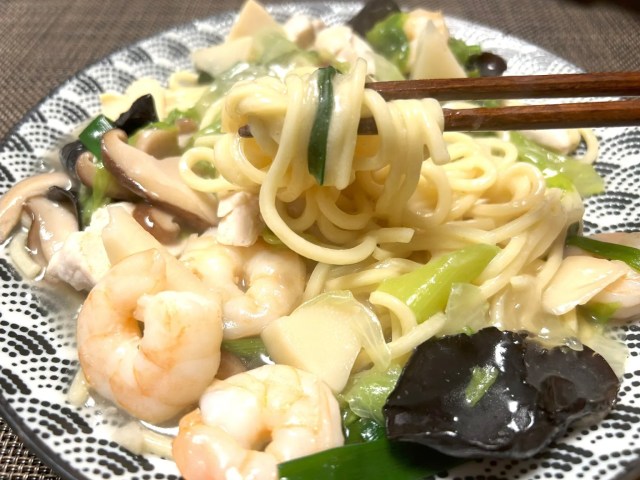
Does our reporter’s attempt cut the mustard?
Our reporter K. Masami often travels to Kyoto, and when she does she’s sure to check out one of the many Cantonese-style Chinese restaurants there. Although they serve a slew of great food, the thing that keeps her coming back for more is the mustard soba (karashi soba).
This dish is rather unique to Kyoto and was said to have been developed by Chinese restauranteurs who moved from the Kanto area and wanted to adapt to Kyoto tastes.
Masami first tried it on a whim while ordering what she saw other customers eating. What came out was a rather unassuming dish of stir-fried noodles, but the server warned her to “be careful because there’s mustard in the noodles.”
▼ This dish uses a hot mustard, known as”karashi” in Japanese.
Sure enough, it had a blast of flavor that made Masami an instant fan. Now, every time she visits Kyoto, she tries it at a different restaurant to compare, but loves it every time. And through these repeated visits she feels she may have figured out how to make mustard soba by herself. It seems to use basic ingredients so she went to her local supermarket to gather everything.
The essential ingredients are mustard paste and Chinese noodles. A cheap tube of mustard paste will do just fine but while noodles are easy to find it might be hard to get restaurant-quality ones. The other ingredients Masami got were chicken stock, shrimp, wood ear mushrooms, lettuce, green onions, bamboo shoots, shiitake mushrooms, and chicken breast, though thigh meat will do if breast is unavailable.
The first step is to prepare the sauce. She mixed the chicken stock with hot water and added it to the chicken, shrimp, and vegetables as she stir-fried them until everything is covered in sauce. Next, she let it all simmer.
When it came to a gentle boil, she added the potato starch mixed with water to thicken it. She felt the taste was a little thin so she added salt and pepper to spice it up a bit.
You’ve probably noticed that so far no mustard has been used. That’s because Masami learned from watching the kitchen staff at restaurants that the mustard is applied directly to the noodles rather than the sauce.
So, she prepared a bowl with a mixture of mustard paste, vinegar, and soy sauce, and added the lightly boiled noodles to it.
The balance of these three flavors can be adjusted for personal taste. In Masami’s case, she likes bold tanginess so she used two and a half tablespoons of mustard and two tablespoons of vinegar.
After mixing the noodles into the flavorings she placed them on a plate and covered them with the sauce.
All in all, it was pretty easy to make mustard soba. Of course, she didn’t quite reach that restaurant-quality taste, but she was close enough to feel satisfied with it.
As with any home-cooking, lessons are learned along the way. For example, in this dish, Masami found that she added the potato starch too early. The texture of the sauce would turn out much better if she had waited and added it just before serving.
Also, since its easy to make and can use common ingredients, Masami often whips it up for a quick lunch when needed. It’s an addictive taste, so if you’re one of the many people who can’t easily get out to a Cantonese restaurant in Kyoto, this is definitely the next best thing.
Photos © SoraNews24
● Want to hear about SoraNews24’s latest articles as soon as they’re published? Follow us on Facebook and Twitter!
[ Read in Japanese ]

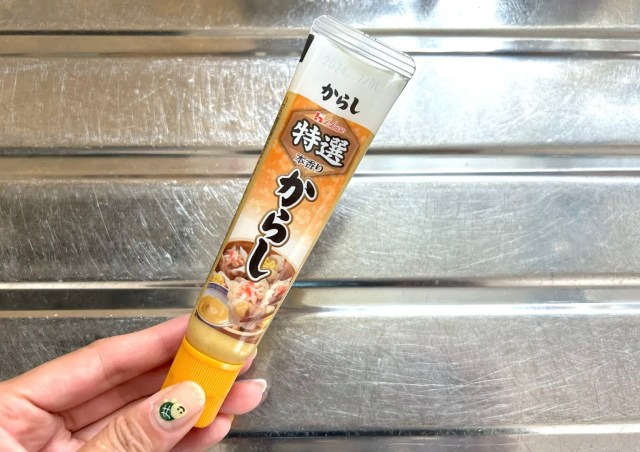
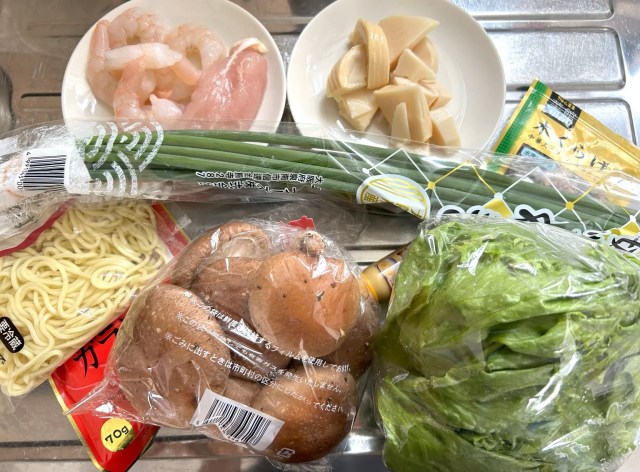
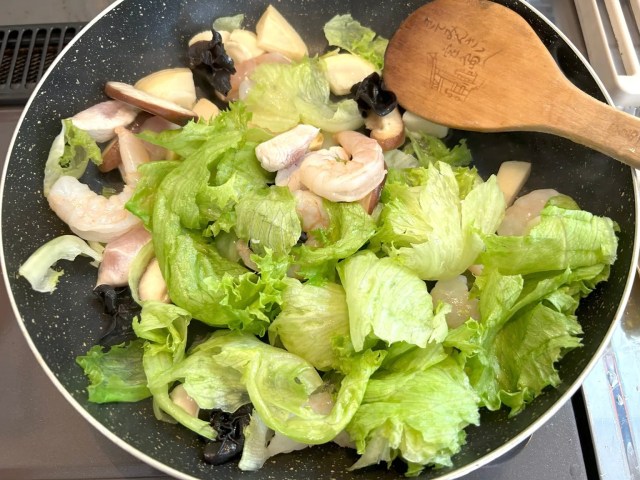
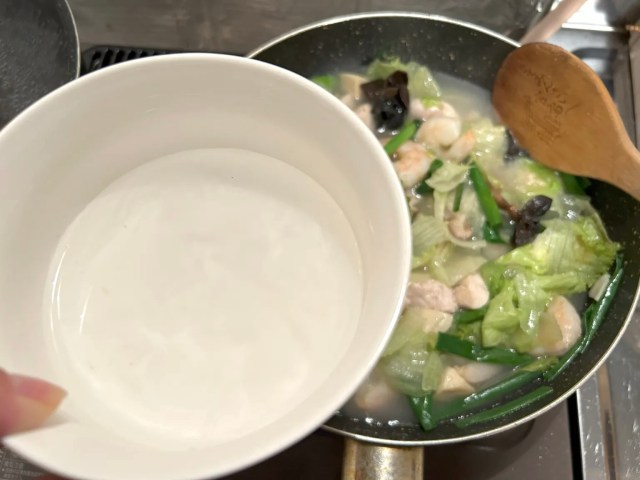
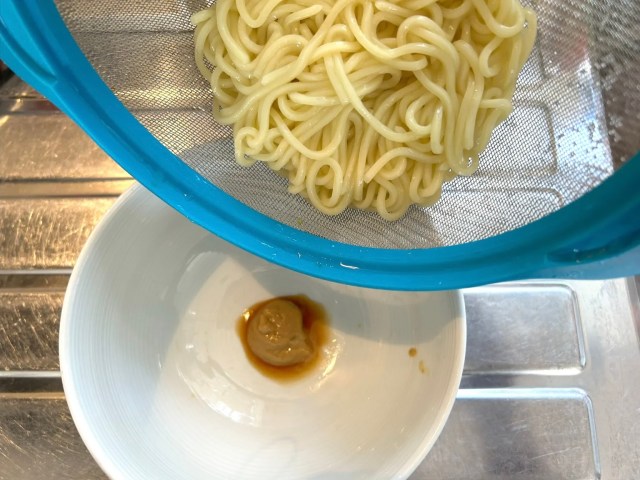
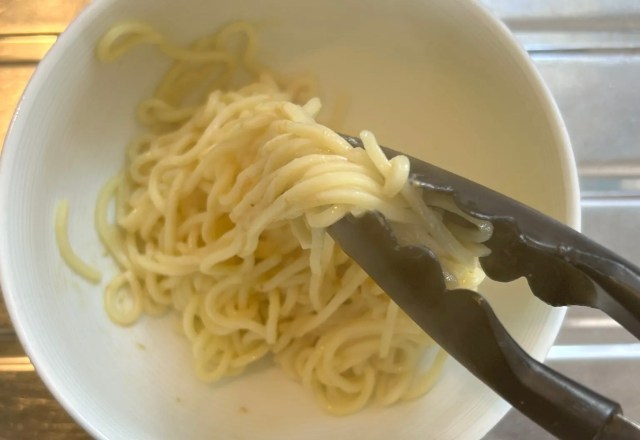
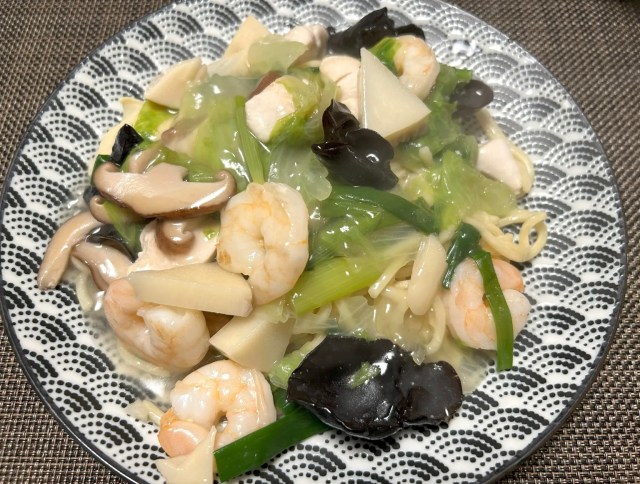
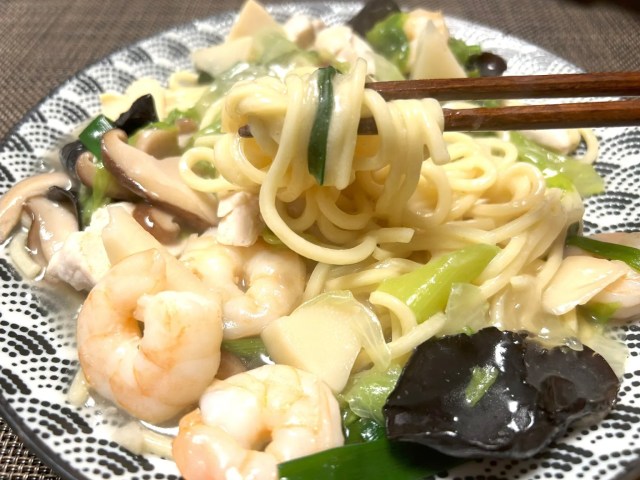
 Which conveyor belt sushi place’s chawanmushi egg custard is the best? We investigate【Taste Test】
Which conveyor belt sushi place’s chawanmushi egg custard is the best? We investigate【Taste Test】 Chocolate and chicken? We try Lotteria’s Chocolate & Honey Mustard Grilled Chicken Burger!
Chocolate and chicken? We try Lotteria’s Chocolate & Honey Mustard Grilled Chicken Burger! We try out the fifth most popular restaurant among foreigners in Japan: Italian restaurant Nino
We try out the fifth most popular restaurant among foreigners in Japan: Italian restaurant Nino New spreadable French Toast from Japan is a game-changer
New spreadable French Toast from Japan is a game-changer Kyoto curry bread comes with a very special filling
Kyoto curry bread comes with a very special filling Foreigner’s request for help in Tokyo makes us sad for the state of society
Foreigner’s request for help in Tokyo makes us sad for the state of society Japanese city loses residents’ personal data, which was on paper being transported on a windy day
Japanese city loses residents’ personal data, which was on paper being transported on a windy day Should you add tartar sauce to Japanese curry rice? CoCo Ichi makes diners an unusual offer
Should you add tartar sauce to Japanese curry rice? CoCo Ichi makes diners an unusual offer Seaside scenery, history, and so many desserts on Yokohama’s Akai Kutsu【Japan Loop Buses】
Seaside scenery, history, and so many desserts on Yokohama’s Akai Kutsu【Japan Loop Buses】 Harajuku Station’s beautiful old wooden building is set to return, with a new complex around it
Harajuku Station’s beautiful old wooden building is set to return, with a new complex around it Japan’s summertime towelket pillowcases are even better with the addition of Ghibli stars【Photos】
Japan’s summertime towelket pillowcases are even better with the addition of Ghibli stars【Photos】 Akihabara pop-up shop sells goods made by Japanese prison inmates
Akihabara pop-up shop sells goods made by Japanese prison inmates The best Japanese cosplayers from Day 4 of Winter Comiket 2019【Photos】
The best Japanese cosplayers from Day 4 of Winter Comiket 2019【Photos】 Ghibli Park now selling “Grilled Frogs” from food cart in Valley of Witches
Ghibli Park now selling “Grilled Frogs” from food cart in Valley of Witches Sandwiches fit for a sumo served up in Osaka【Taste Test】
Sandwiches fit for a sumo served up in Osaka【Taste Test】 McDonald’s new Happy Meals offer up cute and practical Sanrio lifestyle goods
McDonald’s new Happy Meals offer up cute and practical Sanrio lifestyle goods Japanese ramen restaurants under pressure from new yen banknotes
Japanese ramen restaurants under pressure from new yen banknotes French Fries Bread in Tokyo’s Shibuya becomes a hit on social media
French Fries Bread in Tokyo’s Shibuya becomes a hit on social media Studio Ghibli releases new action figures featuring Nausicaä of the Valley of the Wind characters
Studio Ghibli releases new action figures featuring Nausicaä of the Valley of the Wind characters Red light district sushi restaurant in Tokyo shows us just how wrong we were about it
Red light district sushi restaurant in Tokyo shows us just how wrong we were about it New private rooms on Tokaido Shinkansen change the way we travel from Tokyo to Kyoto
New private rooms on Tokaido Shinkansen change the way we travel from Tokyo to Kyoto Tokyo Tsukiji fish market site to be redeveloped with 50,000-seat stadium, hotel, shopping center
Tokyo Tsukiji fish market site to be redeveloped with 50,000-seat stadium, hotel, shopping center Beautiful Ghibli sealing wax kits let you create accessories and elegant letter decorations【Pics】
Beautiful Ghibli sealing wax kits let you create accessories and elegant letter decorations【Pics】 Studio Ghibli releases Kiki’s Delivery Service chocolate cake pouches in Japan
Studio Ghibli releases Kiki’s Delivery Service chocolate cake pouches in Japan New definition of “Japanese whiskey” goes into effect to prevent fakes from fooling overseas buyers
New definition of “Japanese whiskey” goes into effect to prevent fakes from fooling overseas buyers Our Japanese reporter visits Costco in the U.S., finds super American and very Japanese things
Our Japanese reporter visits Costco in the U.S., finds super American and very Japanese things All-you-can-drink Starbucks and amazing views part of Tokyo’s new 170 meter-high sky lounge
All-you-can-drink Starbucks and amazing views part of Tokyo’s new 170 meter-high sky lounge More foreign tourists than ever before in history visited Japan last month
More foreign tourists than ever before in history visited Japan last month New Pokémon cakes let you eat your way through Pikachu and all the Eevee evolutions
New Pokémon cakes let you eat your way through Pikachu and all the Eevee evolutions Disney princesses get official manga makeovers for Manga Princess Cafe opening in Tokyo
Disney princesses get official manga makeovers for Manga Princess Cafe opening in Tokyo Sales of Japan’s most convenient train ticket/shopping payment cards suspended indefinitely
Sales of Japan’s most convenient train ticket/shopping payment cards suspended indefinitely Sold-out Studio Ghibli desktop humidifiers are back so Totoro can help you through the dry season
Sold-out Studio Ghibli desktop humidifiers are back so Totoro can help you through the dry season Japanese government to make first change to romanization spelling rules since the 1950s
Japanese government to make first change to romanization spelling rules since the 1950s Ghibli founders Toshio Suzuki and Hayao Miyazaki contribute to Japanese whisky Totoro label design
Ghibli founders Toshio Suzuki and Hayao Miyazaki contribute to Japanese whisky Totoro label design Doraemon found buried at sea as scene from 1993 anime becomes real life【Photos】
Doraemon found buried at sea as scene from 1993 anime becomes real life【Photos】 Tokyo’s most famous Starbucks is closed
Tokyo’s most famous Starbucks is closed One Piece characters’ nationalities revealed, but fans have mixed opinions
One Piece characters’ nationalities revealed, but fans have mixed opinions We asked a Uniqlo employee what four things we should buy and their suggestions didn’t disappoint
We asked a Uniqlo employee what four things we should buy and their suggestions didn’t disappoint Princesses, fruits, and blacksmiths: Study reveals the 30 most unusual family names in Japan
Princesses, fruits, and blacksmiths: Study reveals the 30 most unusual family names in Japan CoCo Ichibanya now selling Taiwanese Lo Bah Spice Curry for a limited time【Taste test】
CoCo Ichibanya now selling Taiwanese Lo Bah Spice Curry for a limited time【Taste test】 Kyoto cafe shows us the beauty of minerals through its breathtaking dishes
Kyoto cafe shows us the beauty of minerals through its breathtaking dishes The new mustard mayo black pepper yakisoba “Demon King” flavor is here to terrorize tongues
The new mustard mayo black pepper yakisoba “Demon King” flavor is here to terrorize tongues We try making imoni, the beloved taro and beef stew of northern Japan【SoraKitchen】
We try making imoni, the beloved taro and beef stew of northern Japan【SoraKitchen】 McDonald’s Japan releases Spicy Chicken McNuggets so spicy they’ll knock you out? 【Taste Test】
McDonald’s Japan releases Spicy Chicken McNuggets so spicy they’ll knock you out? 【Taste Test】 Does cucumber and whiskey smell like melon?
Does cucumber and whiskey smell like melon? Colorful custom Cup Noodles sold at Momofuku Noodle in Osaka with 2,145 different varieties
Colorful custom Cup Noodles sold at Momofuku Noodle in Osaka with 2,145 different varieties This ramen restaurant has no name, is one of the best hidden finds in Japan
This ramen restaurant has no name, is one of the best hidden finds in Japan Capsule machine found in Nara with mystery edible insects
Capsule machine found in Nara with mystery edible insects How to make “sushi” for your cats!【Video】
How to make “sushi” for your cats!【Video】 Starbucks releases new ice cream bowls for a limited time in Japan!
Starbucks releases new ice cream bowls for a limited time in Japan! Starbucks Japan new Nyu Frappuccino: An old-school throwback that reminds us of Osaka【Taste test】
Starbucks Japan new Nyu Frappuccino: An old-school throwback that reminds us of Osaka【Taste test】 Japanese restaurant chain shows us how to make katsudon in three minutes【SoraKitchen】
Japanese restaurant chain shows us how to make katsudon in three minutes【SoraKitchen】 KFC now has hamburgers in Japan, no chicken or frying involved
KFC now has hamburgers in Japan, no chicken or frying involved Cups made of kelp from Hokkaido add a touch of umami to whatever you put inside
Cups made of kelp from Hokkaido add a touch of umami to whatever you put inside
Leave a Reply